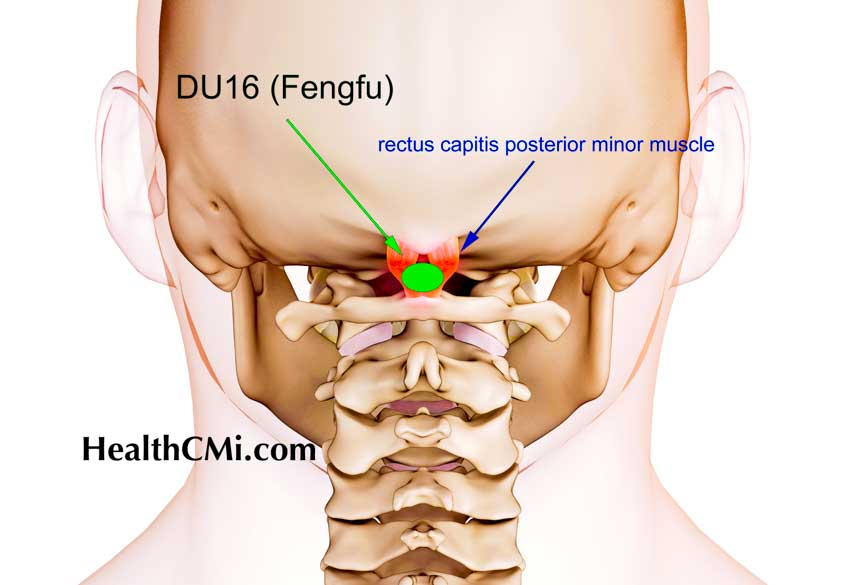Acupuncture is effective for regulating levels of inflammatory cytokines and relieving discomfort and pain in patients with cervicogenic headaches. Researchers from Beijing Anzhen Hospital Affiliated to Capital Medical University and Shandong Shengli Oilfield Hospital conducted a clinical trial comparing the efficacy of electro -warm needle acupuncture and regular warm needle acupuncture. The electro -warm needle acupuncture treatment yielded superior patient outcomes. [1]
The parameters in this study included the Visual Analog Scale (VAS) score and the Northwick Park Neck Pain Questionnaire (NPQ) score, and inflammatory cytokine levels. The following three-level symptom scoring system was adopted.
- Significantly effective: Cervical pain and headache eliminated, no relapses in 30 days after being discharged
- Effective: Severity of cervical pain and headache relieved or duration of such conditions shortened, occurrences of relapses markedly reduced
- Ineffective: Symptoms persisted or worsened
VAS scores and NPQ scores both demonstrated more significant decreases in the electro -warm needle acupuncture group, dropping from 3.3 ±0.5 to 2.5 ±0.4 and 46 ±7to 17 ±5 respectively. The levels of interleukin-1 (IL-1), IL-6, IL-8, and tumor necrosis factor-α decreased after treatment. The outcomes of the electro -warm needle acupuncture group was better than that of the control group. The efficacy rate of the electro warm acupuncture group was 95.8% while the efficacy rate of the warm needle acupuncture group was 77%.
The sample of patients was comprised of 96 cases admitted to the hospital from February 2020 to February 2021, and were randomly divided into two groups. For the electro -warm needle acupuncture group, 21 were male and 27 were female, mean age was 59 ±15 years, and average course of disease was 6.2 ±2.6 years. For the warm needle acupuncture group, 26 were male and 22 were female, mean age was 62 ±14 years, and average course of disease was 5.8 ±2.3 years.
In the warm needle acupuncture group, patients took a sitting or prone position to receive treatment at the following points:
- GB20 (Fengchi)
- GV16 (Fengfu)
- BL10 (Tianzhu)
- EX-HN23 (Jingbailao)
- GV14 (Dazhui)
- TE3 (Zhongzhu)
- SI15 (Jianzhongshu)
- LI4 (Hegu)
- Ashi (along nervus occipitalis major or nervus occipitalis minor)
A regular warm needle acupuncture device was employed. Four to five points were given treatment alternatively during each treatment session. Needling depth was within the range of 15 to 20 mm. For Fengchi, Tianzhu, and Fengfu, therapists first examined the lower edge of the occipital bone to discern the most painful area. Then, needles were inserted. Insertion length at other points promoted a deqi sensation. Upon deqi, needles were connected to the electro -warm needle acupuncture device. Temperature was set to 42 degrees Celcius for two to five minutes. Needles were retained for 30 to 40 minutes before they were swiftly extracted. The above treatment was administered twice a week for two weeks.
For the electro -warm needle acupuncture group, the same needling techniques were applied at the same acupoints. An electro -warm needle acupuncture device was used to stimulate before the warm needle acupuncture procedure. Frequency was set at 50 Hz and the electro-stimulation lasted for two to three minutes. The course and frequency of treatment was the same as the control group. The results from this study show that electro warm needle acupuncture greatly improves symptoms for patients suffering from cervicogenic headaches.
Reference:
[1] He Mingwei, Ge Weipeeg, Pang Jinlei, Wu Jianxue, Wang Zhongwei, et al., The Effects Observation of Electro-warm Acupuncture on Cervicogenic Headache, China Medicine, August 2022, Vol. 17, No. 8.



